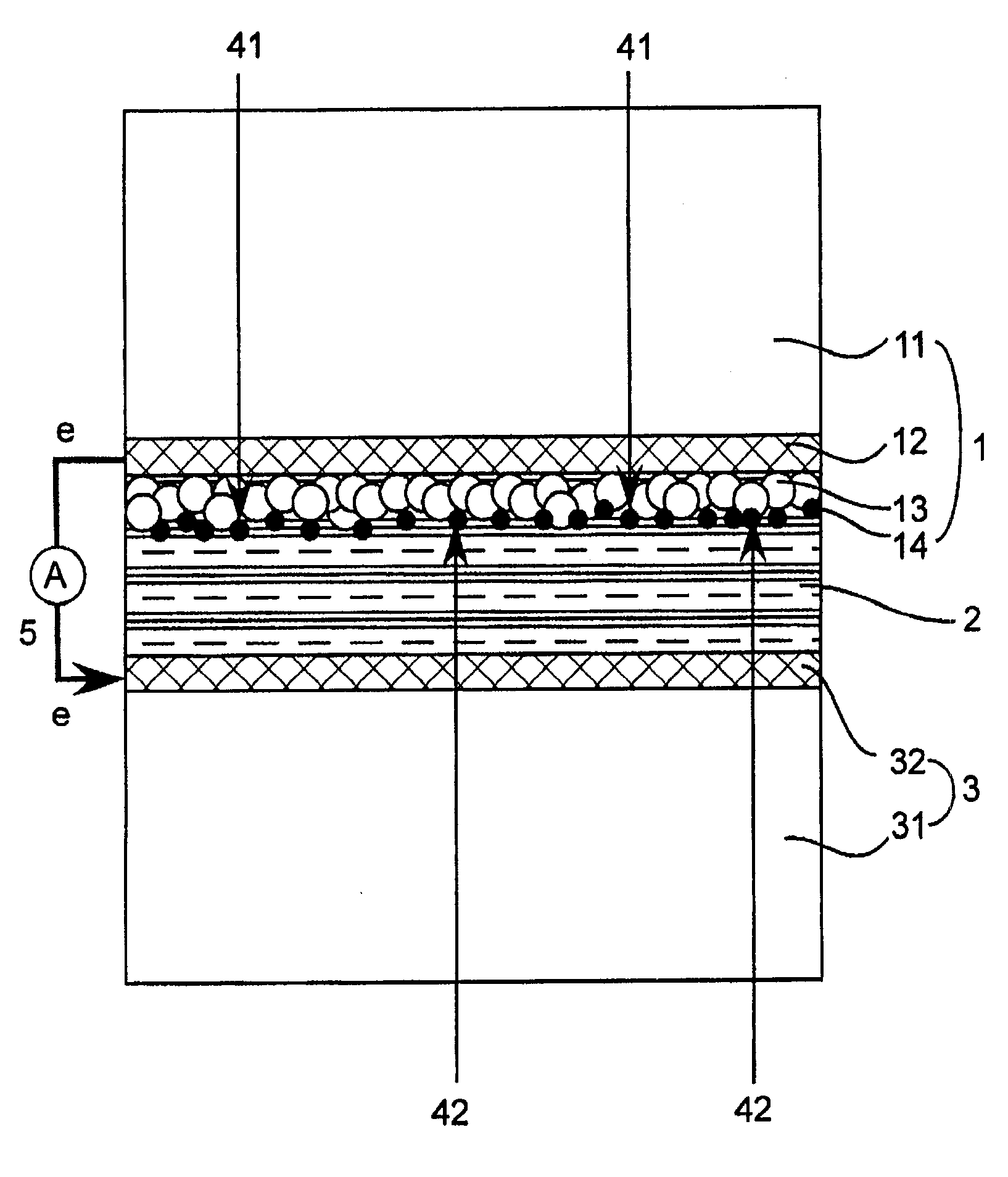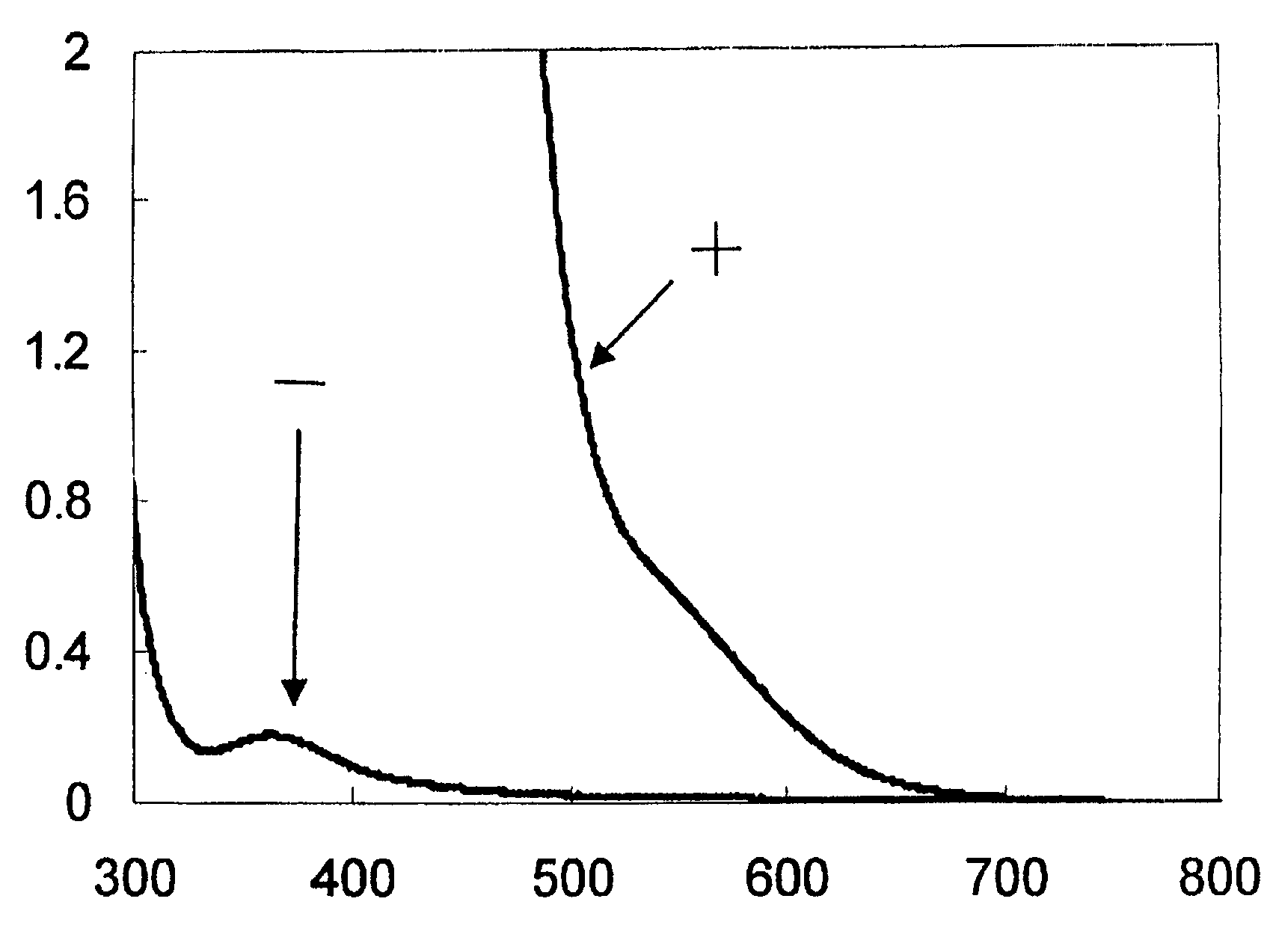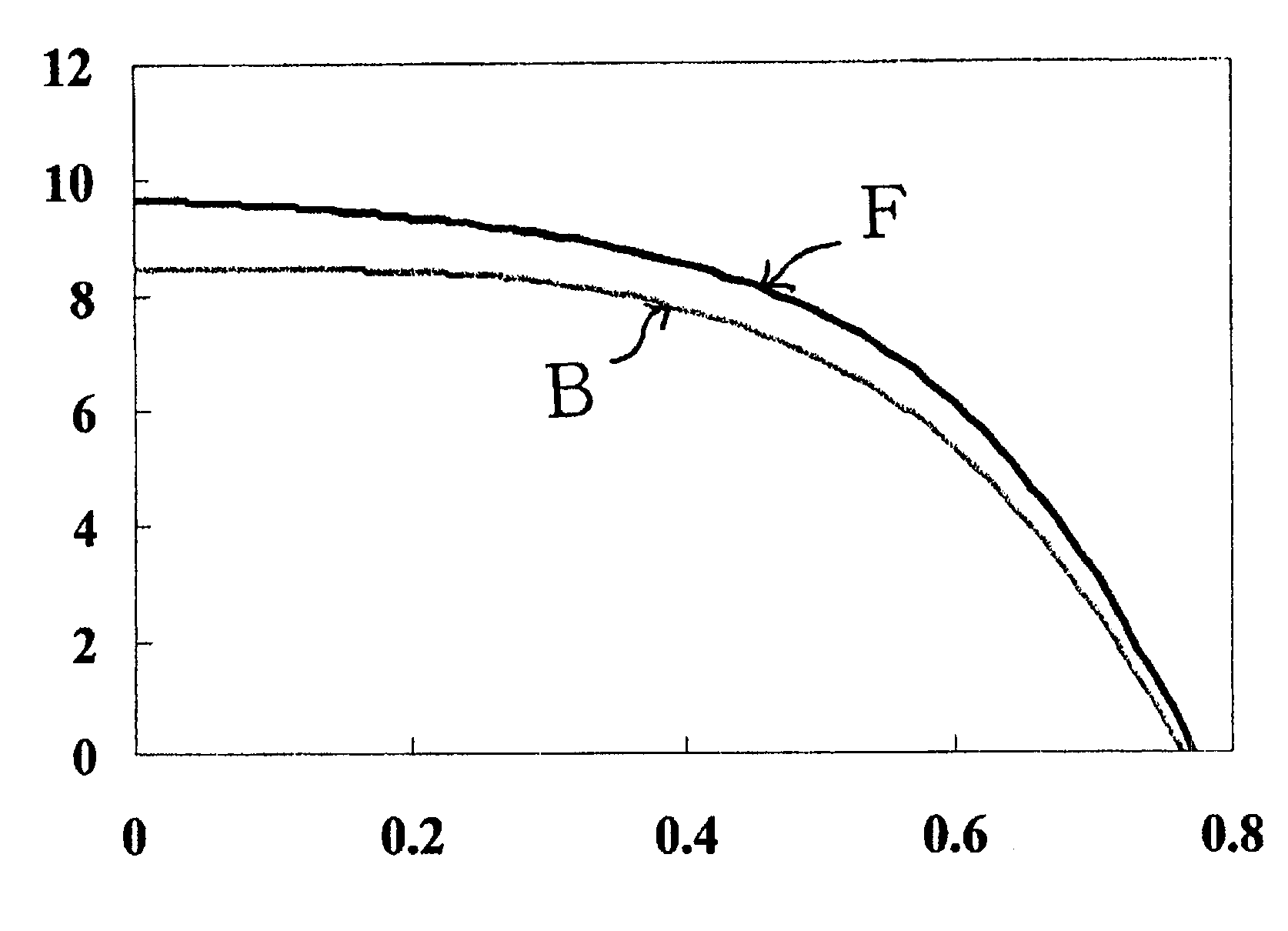Dye-sensitized photoelectric conversion element
A technology for photoelectric conversion elements and pigment sensitization, applied in electrical elements, photovoltaic power generation, circuits, etc., can solve the problems of inability to exert the function of solar cells, and achieve the effect of improving transparency, reducing the amount of addition, and reducing coloring
- Summary
- Abstract
- Description
- Claims
- Application Information
AI Technical Summary
Problems solved by technology
Method used
Image
Examples
preparation example Construction
[0088] In the preparation of the electrolytic solution, the amount of iodine added to the iodide ion can be reduced to the same mole % or less as the above-mentioned triiodide ion.
[0089] The organic solvent is preferably an aprotic polar substance. Examples of the organic solvent include: five-membered ring cyclic carbonates, five-membered ring cyclic esters, aliphatic nitriles, aliphatic chain ethers, and aliphatic cyclic ethers.
[0090] The five-membered cyclic carbonate is preferably represented by the following formula (III).
[0091] [chemical 6]
[0092]
[0093] In formula (III), R 31 and R 32 Each independently, is a hydrogen atom or an aliphatic group with 1-20 carbon atoms. The aliphatic group is preferably an alkyl group. The number of carbon atoms in the aliphatic group is preferably 1-12, more preferably 1-6, and most preferably 1-3.
[0094] Examples of five-membered cyclic carbonates include ethylene carbonate and propylene carbonate.
[0095] The ...
Embodiment 1
[0262] (1) Electrolyte preparation
[0263] 0.066 g N-methylbenzimidazole, 0.738 g tetrabutylammonium iodide, 0.532 g 1,3-butylmethylimidazole Iodide and 0.058 g of guanidine thiocyanate were added to a 5 mL volumetric flask, and propylene carbonate was added to make the total amount 5 mL. An electrolytic solution not containing iodine was prepared by stirring with vibration of an ultrasonic cleaner for 1 hour, and then standing in a dark place for 24 hours or more.
[0264] As a reference iodine-containing electrolyte, 0.04 M iodine was dissolved in the above electrolyte. The absorption spectra of the electrolyte solution without iodine and the electrolyte solution containing iodine were measured with an optical path length of 1 mm. The result is as figure 2 shown.
[0265] figure 2 It is the absorption spectrum of the electrolyte solution (-) not containing iodine and the electrolyte solution (+) containing iodine (triiodide ion in the electrolyte solution). The hor...
Embodiment 2
[0289] A dye-sensitized photoelectric conversion element was produced in the same manner as in Example 1 except that propylene carbonate was changed to γ-butyrolactone in the preparation of (1) electrolytic solution in Example 1.
[0290] The obtained dye-sensitized photoelectric conversion element was evaluated in the same manner as in Example 1 (6). As a result, the same excellent output current as in Example 1 was obtained. In addition, the difference in the result of incident light from the front side and the back side is also small.
[0291] In the evaluation of (6) of Example 1, the dye-sensitized solar cell was tilted at 60 degrees, and the output current was further measured, and compared with the current output when the dye-sensitized solar cell was irradiated with vertical light. As a result, the current output at an inclination of 60 degrees was 80% of that of vertical light irradiation.
[0292] The durability of the dye-sensitized solar cell was investigated in ...
PUM
| Property | Measurement | Unit |
|---|---|---|
| The average particle size | aaaaa | aaaaa |
| Average size | aaaaa | aaaaa |
| Thickness | aaaaa | aaaaa |
Abstract
Description
Claims
Application Information
 Login to view more
Login to view more - R&D Engineer
- R&D Manager
- IP Professional
- Industry Leading Data Capabilities
- Powerful AI technology
- Patent DNA Extraction
Browse by: Latest US Patents, China's latest patents, Technical Efficacy Thesaurus, Application Domain, Technology Topic.
© 2024 PatSnap. All rights reserved.Legal|Privacy policy|Modern Slavery Act Transparency Statement|Sitemap



